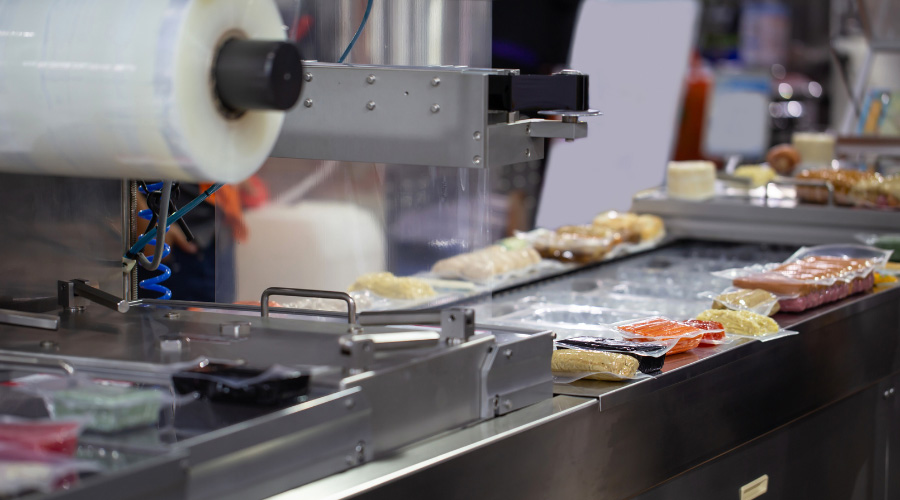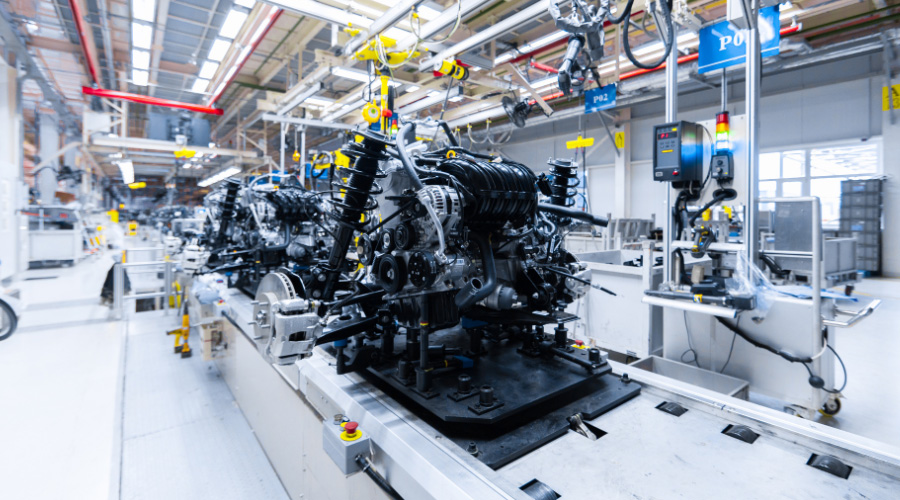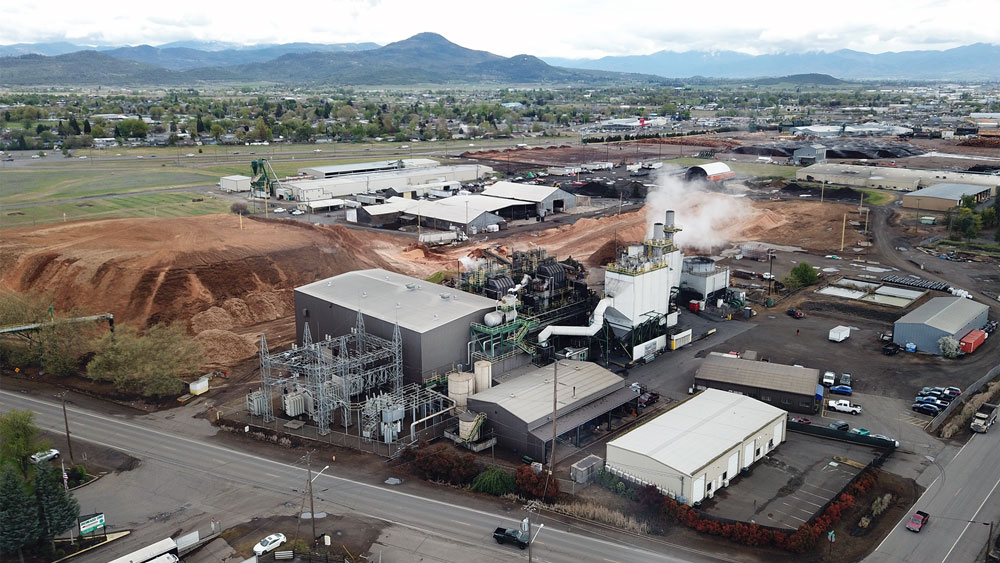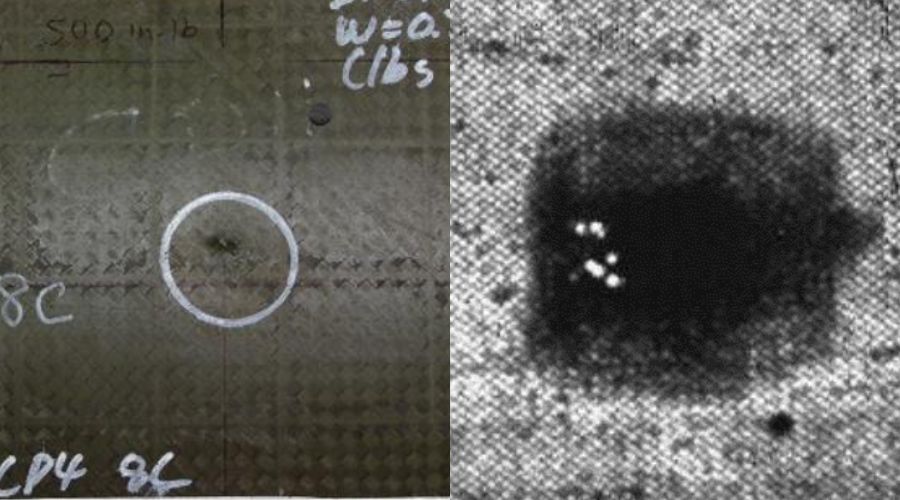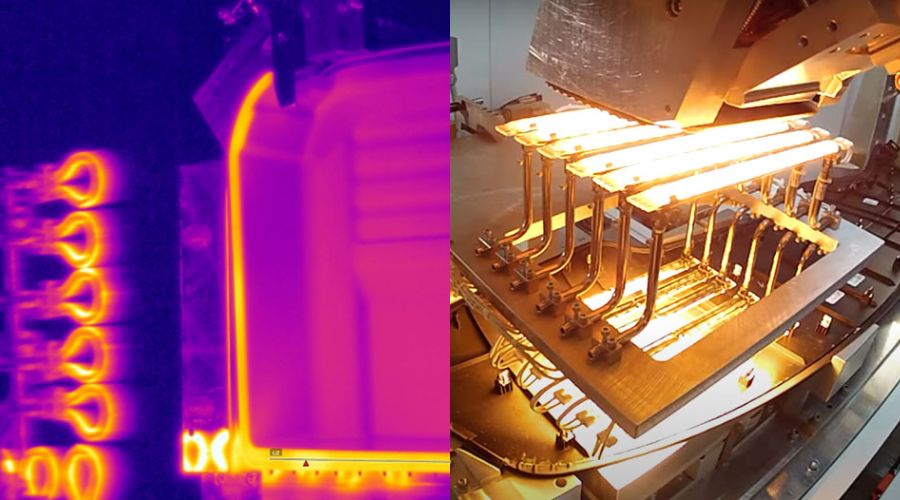
Infrared Welding Applications for Automobile Parts
Infrared camera technology is revolutionizing the automotive industry’s inspection of infrared welding plastics. Infrared welding is a process used to join thermoplastic materials by utilizing infrared radiation to melt the surfaces of the plastic parts to be joined. This is done by exposing the parts to an infrared light source (emitter) tuned to the plastic material’s absorption frequency.
The process of infrared welding plastics involves several steps. First, the parts to be joined are positioned in the welding fixture. Then, the infrared source is positioned to direct its energy toward the area to be welded. The plastic absorbs energy from the infrared source, causing it to melt and fuse together.
The heat generated by the infrared source is concentrated at the joint between the two parts, allowing the plastic to melt and fuse without affecting the rest of the parts. This produces a strong, durable weld resistant to stress and environmental factors.
Infrared welding is commonly used to join plastic parts with complex shapes or require high-strength bonds. The key advantages of infrared welding are:
- No restriction on contour parting lines
- Non-Contact, Particle-Free welding
- Lower energy costs, Instant on/off heat
- Hermetic sealing of critical components
- Weldability of multiple materials
- Higher strength assemblies
- Individual lamp control
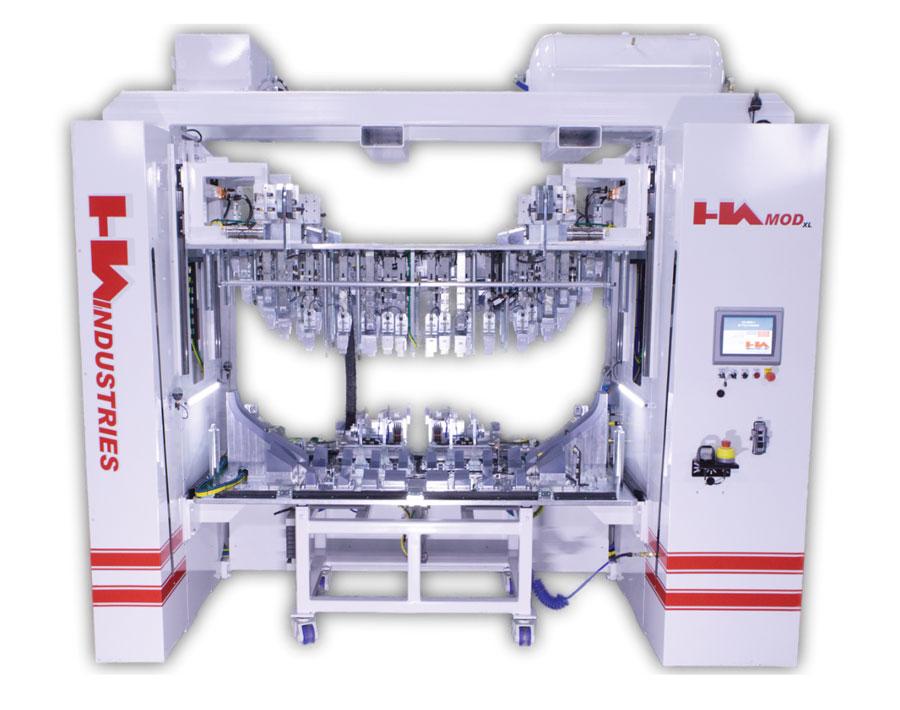
Infrared Welding Machine from HA Industries
Infrared welding is used to manufacture multiple automobile components, including center consoles, battery cases, fluid reservoirs, manifolds, dash panels, glove boxes, door panels, filters, air ducts, airbag chutes, visors, trays, electrical enclosures, and more. To ensure bond quality on components like these, the welding process must be accurately monitored to ensure the proper distribution of infrared heat and glass melt temperatures is reached within the material interface.
Infrared Cameras for Temperature Monitoring
Infrared cameras work by detecting and measuring the infrared radiation emitted by an object. The camera produces an image that shows the object’s temperature. Infrared cameras are highly effective at inspecting infrared welding of plastics because they can detect the temperature profile of the weld and evaluate whether it has reached the appropriate temperature for creating a strong bond. The camera can also detect cold spots or areas where the plastic has not melted to the right temperature before being pressed together. This is important because a cold spot can weaken bonds and compromise product quality.
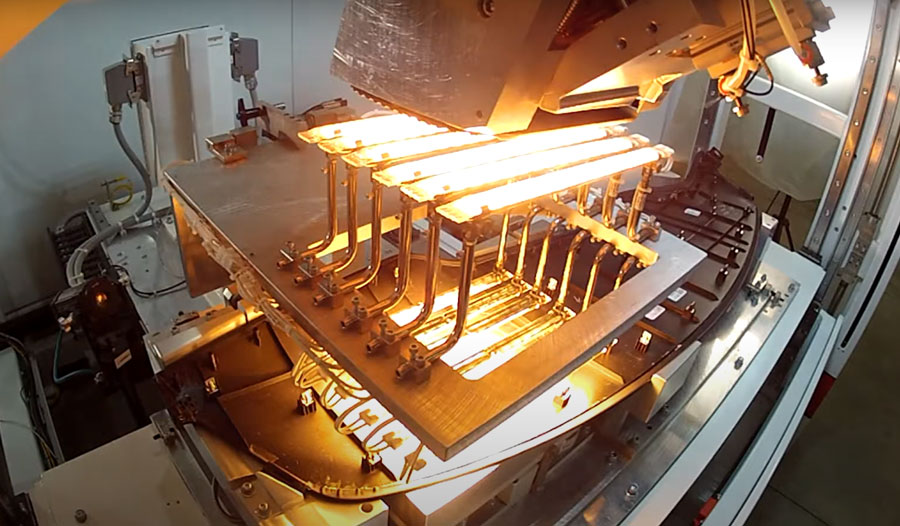
Example of Infrared Emitter Weld Process
Mark Erndt, president of HA Industries, explains the importance of infrared inspection for quality control in welding.
“The thermal imaging camera gives us a snapshot in real-time of what’s going on with that weld. We can watch a weld and understand when it’s trending off normal, allowing real-time machine adjustment to always have a harmonized weld.”
Markus Tarin, President and CEO of MoviTHERM Advanced Thermal Solutions, further explains how infrared inspection works.
“We utilize non-contact infrared cameras to measure the thermal radiation coming from that heated portion of the piece. We can see the actual temperature profile of the weld and evaluate whether it has reached the appropriate temperature for creating a strong bond before the parts are pressed together. If we don’t get to the glass transition of the plastic, you will have a cold spot, and when pressed together, you get a poor weld or no bond at all.”
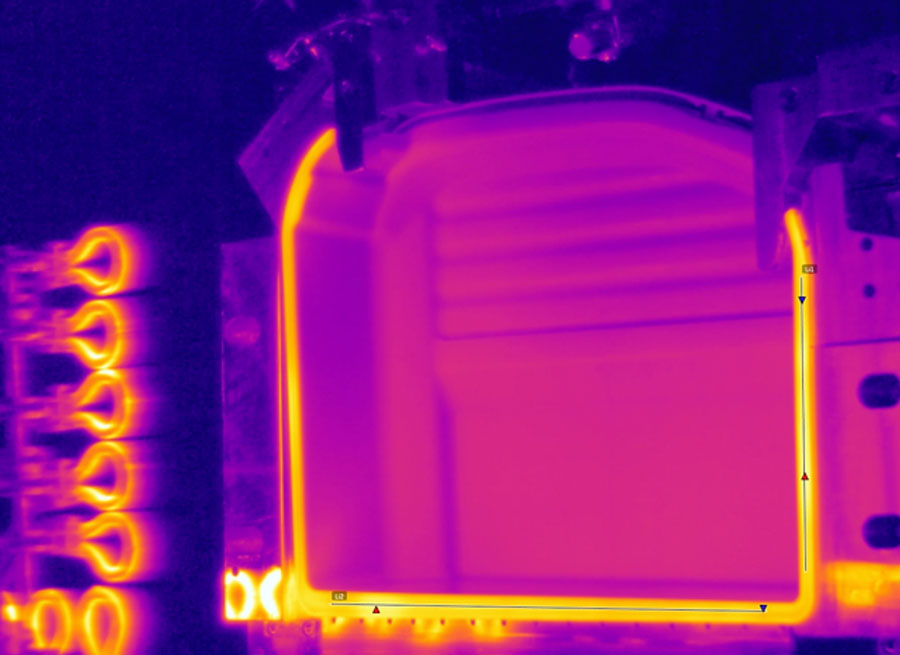
Infrared image of the heated part before bonding
Infrared Inspection Systems
Infrared inspection systems typically consist of one or multiple cameras, depending on the size and complexity of the part being inspected. The cameras are connected to a computer running inspection software that analyzes the images captured by the cameras. The software evaluates the temperature profile of the weld and determines whether it meets the required specifications. The inspection system can communicate with the machine controller to detect temperature variations and make real-time adjustments to ensure the bond is strong and meets the required specifications.
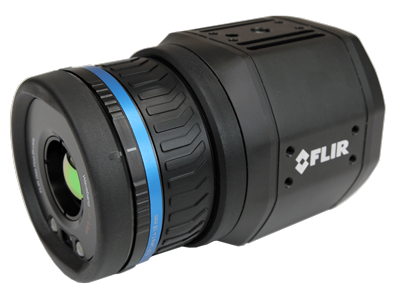
Example infrared camera used in an infrared inspection system: FLIR A700
Conclusion
In conclusion, infrared camera technology is an essential tool for quality control in the infrared welding of plastics in the automotive industry. An infrared inspection ensures that the bond between the plastic parts is strong and meets the required specifications, which is crucial for product quality and safety. The non-contact nature of infrared inspection also makes it ideal for inspecting contoured parts and dissimilar materials. As the technology continues to evolve, we expect to see even more advanced infrared inspection systems that can detect variations upstream and provide even more precise and accurate inspection results.
About MoviTHERM:
MoviTHERM – Advanced Thermography solutions was founded in 1999. The company offers solutions for plastic welding, package sealing, and non-destructive testing. In addition, MoviTHERM provides IoT Cloud monitoring solutions for thermal imaging applications for early fire detection, machine condition monitoring, and other applications. MoviTHERM is a Teledyne FLIR Premium Partner and master distributor for FLIR Thermal Cameras for automation and science applications.

